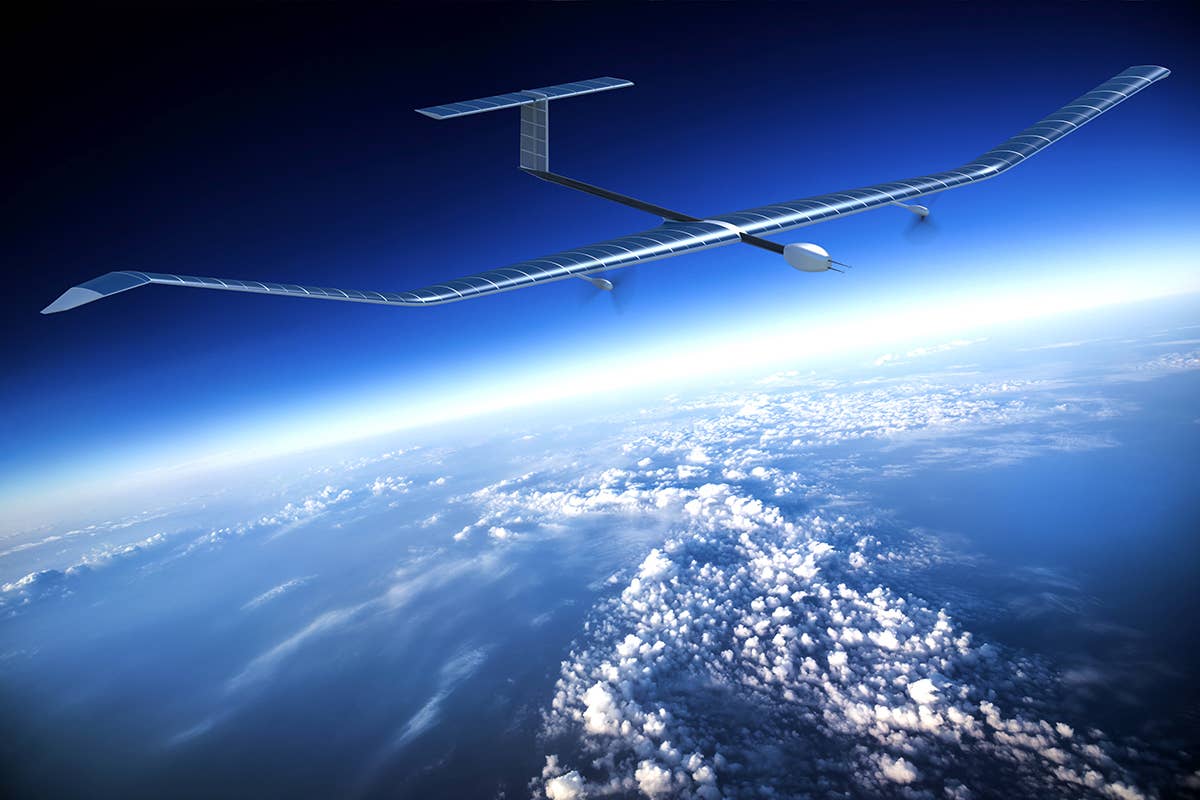Army’s Solar-Powered Drone Crashes After 64 Days in the Air
The Airbus Zephyr’s ‘unexpected termination’ comes after it surpassed all known uncrewed aircraft endurance records.

During the 64-day trial, the drone ascended to more than 60,000 feet before it flew a course over the southern U.S., the Gulf of Mexico, and South America before returning to Yuma airspace. [Courtesy: Airbus Defence]
A U.S. Army flight test of its solar-powered Airbus Defence Zephyr ultra-long endurance stratospheric unmanned air system (UAS) has abruptly ended with a crash, after more than two months in air.
Army Future Command's Assured Positioning, Navigation and Timing/Space (APNT/Space) Cross-Functional Team (CFT) launched the Zephyr 8 UAS on June 15 at Yuma Proving Ground in Arizona to test the UAS's energy storage capacity, battery longevity, station-keeping abilities, and solar panel efficiency as a means to boost intelligence, surveillance, and reconnaissance capabilities.
During the 64-day trial, the drone ascended to more than 60,000 feet before it flew a course over the southern U.S., the Gulf of Mexico, and South America before returning to Yuma airspace.
The flight was cut short, however, when it "encountered events" on August 18, around 9 p.m., according to Army officials.
"The events that led to Zephyr's unexpected termination are currently under investigation. Further information will be released once the investigation is complete," Army Futures Command spokesperson Madeline Winkler told FLYING.
Flight data indicated the Zephyr experienced a rapid descent at a rate of 4,544 fpm, Flight Global reported.
While officials did not provide further detail about the event, they said not all was lost. The Zephyr 8 flew more than 30,000 nm during the test and doubled a previous UAS endurance record of about 26 days. It amassed 1,500 flight hours, which also beat all known unmanned aircraft endurance records, the Army said.
Previous Endurance Record Smashed
“Despite this event, the Army and its partners have gleaned invaluable data and increased knowledge on the endurance, efficiency, and station keeping abilities of high-altitude UAS platforms," Michael Monteleone, director of the APNT/Space CFT, said in a statement. "That knowledge will allow us to continue to advance requirements for reliable, modernized stratospheric capabilities to our soldiers.”
Airbus Defence did not immediately respond to a request for comment.

Sign-up for newsletters & special offers!
Get the latest FLYING stories & special offers delivered directly to your inbox






